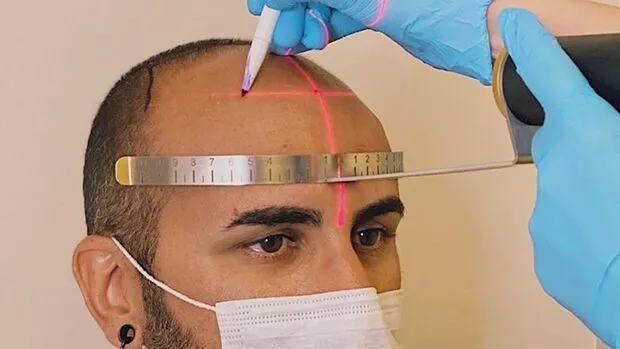
Among the strongly recommended precautions for decreasing the intensity of postoperative edema is adopting a suitable position for sleep. How to sleep after a Fue hair transplant? Generally, edema can last up to 6 days after hair transplantation. That is why it is essential to be more careful during the sleep period, not to aggravate this edema.
Fortunately, the invention of the FUE technique of follicular harvesting grafts in a separate way eliminated the presence of a long wound at the donor area. This wound was like discomfort to the patient during his sleep time.
Most patients who aim to undergo hair restoration wonder about the most appropriate sleep position after hair transplantation. Indeed, the doctor recommends the patient adopt a half-sitting position when sleeping.
Adequate sleep is an essential element that has proven its effectiveness in stimulating the secretion of hormones. Growth factors are promoting hair regrowth. For this, the patient must enjoy a sound sleep after his transplant not only to accelerate regrowth. This can also encourage the healing process of micro incisions.
To prepare the favorable conditions for a good sleep, it is better to use pillows and cushions on the sides and behind the back to avoid an aggressive change of position during the night. And for good comfort, the patient can also use the cushions intended for travel and place them around their neck. This instruction helps to protect the receiving area from trauma. At the same time, allows the follicular grafts to stabilize.
The first month after the operation, we enter the resting phase, where we are asked to continue to protect ourselves from the sun without resorting to exceptional care, not even when we wash our hair.
What is the Correct Sleep Method After an FUE Hair Transplant
Generally, after a hair transplant, among the concerns of the patient is the protection of implanted follicular grafts during the sleep period. It is enough to adopt a good position that allows good comfort to the patient.
By the way, after the procedure of hair transplantation, the doctor performs a bandage that surrounds the patient’s head to protect him from bleeding. At the same time, it reduces the intensity of postoperative edema.
The right position of sleep
The average sleep position is the horizontal position. It allows the blood flow to flow through all parts of the body without any problems. As for the role of sleep after a transplant, it should not be horizontal. The reason for it is to reduce blood pumping to the scalp during the first four postoperative days.
Still, it is recommended to adopt the semi-sitting position during sleep the first four postoperative days. You can do it by keeping the head raised at an angle of 45 degrees. With the help of three or four pillows, it is easy to demine postoperative appearance edema.
The patient should move away from the bed wood or metal as much as possible to avoid the risk of trauma. Also, cushions and pillows should be smooth and comfortable for him.
The Rhythm of Sleep After FUE Hair Transplantation
Sleep is one of the basic physiological needs of every person. Indeed, sleep is essential to manage fatigue and to recover well after the effort of the day. In general, regular sleep helps the body to function well.
Since hair transplantation is a less invasive operation, the patient may not need more hours of sleep. It is enough to continue with a sleep rhythm of 7 to 8 hours during the first five postoperative months to enjoy profitable hair growth.
On the other hand, good sleep after a hair transplant provides scalp relaxation and helps overcome the adverse effects of stress that can delay the growth of newly transplanted follicular grafts.
Sleep After Transplantation and Postoperative Edema
The appearance of edema is among the most common side effects after a hair transplant. This edema usually arises from anesthetic products used in the procedure of hair restoration.
By the way, among the doctor’s physiological methods, which reduces the intensity of postoperative edema, is the position of sleep after the transplant.
Suppose the patient has well adhered to all the instructions for sleep after hair transplantation, particularly the adoption of a semi-sitting position using pillows to lift the head. In that case, this will help in the rapid concealment of postoperative edema and, as a result, easy and quick recovery of micro incisions.
Moreover, during sleep, the patient must sleep a little away from the bed’s metal or use cushions to create a barrier to protect against a possible trauma with this metal, which can prolong the duration of the appearance of this edema delay the healing process.
To conclude, the semi-sitting position that makes about 45 degrees in angle has shown its effectiveness in reducing the intensity of edema post hair transplant.
Even though edema arrangement after hair transplantation is viewed as typical up to a specific sum, edema and growing beginning from the temple and dropping to the eyelids start to happen in individuals who don’t give the essential rest following the suggestions of hair transplantation. After this stage, it is harder to get edema to pass right away. In this manner, it will be more right to act by playing it safe for expanding following the activity.
Facial Expanding After Hair Transplantation
To keep expanding from happening, the obligations of the patient after the activity are very high. By following your primary care physician’s exhortation after the workout, you can make this cycle more agreeable. What is the connection between How to sleep after a Fue hair transplant and facial expansion? Facial expansion after hair transplantation is a difficulty that can be eased by taking the correct measures; however, don’t disregard to counsel your primary care physician if there should arise an occurrence of abrupt, dubious growth.
Actual techniques incorporate tight headband utilization, keeping up semi-set down position postoperatively, applying cement tapes beneath hairline, and the use of ice gathers or packs of solidified peas. The utilization of steroids might be by oral course, intramuscular infusion, and adding a steroid to the local sedative. In any case, none of these ideas has been found entirely acceptable. This investigation endeavors to think about the viability of different methods portrayed in writing used to diminish edema.





